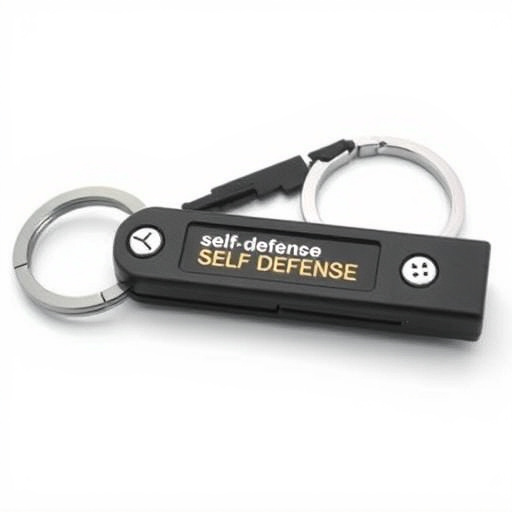When designing compact keychain defense tools, selecting durable materials like high-quality stainless steel and heat-treated aluminum alloy is crucial for both strength and portability. These materials ensure the tool is lightweight yet robust, providing effective self-defense in emergencies while fitting comfortably on a keychain. Prioritizing safety features and ergonomics further enhances usability, making these tiny devices practical for personal protection without compromising convenience.
In today’s world, compact keychain defense tools offer a convenient yet powerful solution for personal safety. Choosing the right durable materials is crucial for effectiveness and reliability. This article explores essential design considerations, focusing on compactness and efficiency, while also delving into safety features and ergonomics to ensure user comfort and piece of mind. Discover how top-tier materials like high-strength alloys and impact-resistant polymers contribute to making keychain defense tools a viable option for self-defense enthusiasts.
- Choosing the Right Durable Materials for Keychain Defense Tools
- Design Considerations for Compact and Effective Weapons
- Safety Features and Ergonomics in Keychain Self-Defense Tools
Choosing the Right Durable Materials for Keychain Defense Tools
When designing a compact keychain defense tool, selecting the appropriate durable materials is a critical step. The key is to find a balance between lightweight construction for easy carriage and robust strength to ensure effectiveness in self-defense situations. High-quality stainless steel, such as 410 or 304 grade, offers excellent corrosion resistance and durability, making it an ideal choice for the tool’s core components. These materials can withstand rigorous use without compromising structural integrity, ensuring the keychain defense tool remains reliable over time.
Additionally, incorporating heat-treated aluminum alloy for certain parts can provide enhanced rigidity and impact resistance. The right combination of these durable materials allows for a lightweight yet sturdy defense tool that fits comfortably on a keychain. This careful material selection is essential to create a compact self-defense device that users can confidently rely on in various situations.
Design Considerations for Compact and Effective Weapons
When designing a compact keychain defense tool, balance is key. The primary consideration is to create a device that is small enough to fit comfortably on a keychain but robust enough to serve as an effective self-defense mechanism. Durable materials are essential; the tool should be crafted from high-quality metal alloys or advanced composite materials capable of withstanding regular use and potential impact. Stainless steel, titanium, and high-performance polymers are popular choices for their strength-to-weight ratio and resistance to corrosion, ensuring longevity in various environments.
Functionality should not compromise portability. Careful engineering is required to integrate a sharp blade or other striking mechanism into the compact form factor. This may involve folding blades, hidden springs, or innovative designs that retract securely when not in use. Ergonomics play a vital role; the tool should fit snugly in the hand for easy access and control during an emergency situation. Additionally, incorporating features like a lanyard hole or a durable keychain attachment ensures the user can keep it handy at all times.
Safety Features and Ergonomics in Keychain Self-Defense Tools
In designing compact keychain defense tools, safety features and ergonomics are paramount. These tiny devices are intended for personal protection in situations where one might need a quick, effective deterrent. Therefore, they should be crafted with robust durability in mind, utilizing materials that can withstand impact and wear without compromising integrity or effectiveness. Durable Materials for Keychain Weapons play a crucial role in ensuring these tools remain reliable under stress.
Ergonomics are equally vital to make the keychain defense tool user-friendly. The design should allow for easy deployment and control, even in moments of heightened tension. A well-designed grip and trigger mechanism can significantly enhance the tool’s usability, ensuring users can access it swiftly and effectively when needed most. This focus on ergonomics contributes to overall safety by promoting responsible use and reducing accidents.
When designing a compact keychain defense tool, prioritizing durable materials like high-strength alloys and impact-resistant polymers is essential. Balancing effectiveness, safety features, and ergonomics ensures a practical and reliable self-defense option that users can carry with confidence. By selecting the right materials and incorporating thoughtful design considerations, these tools offer an innovative solution for personal safety in today’s world.
